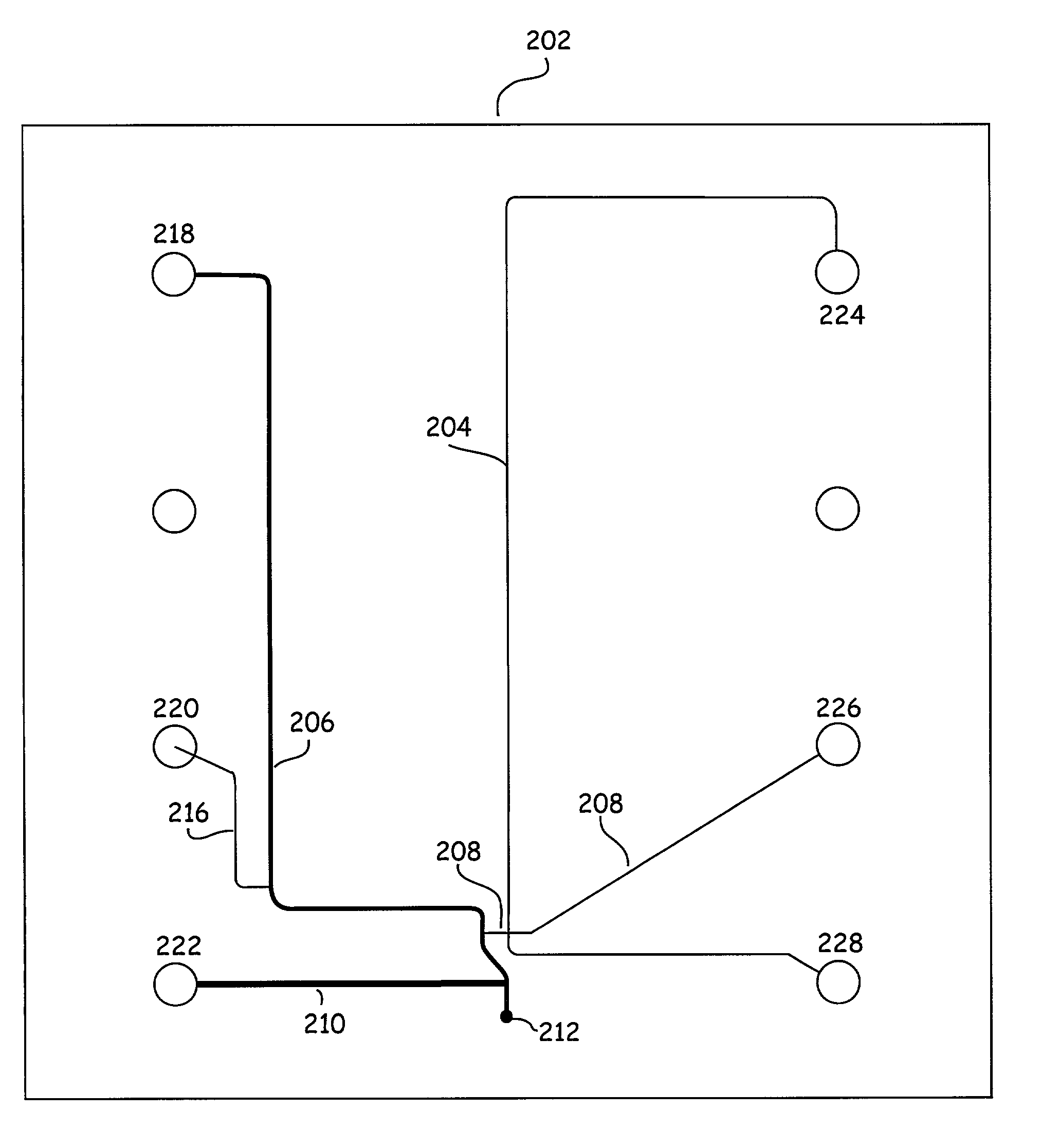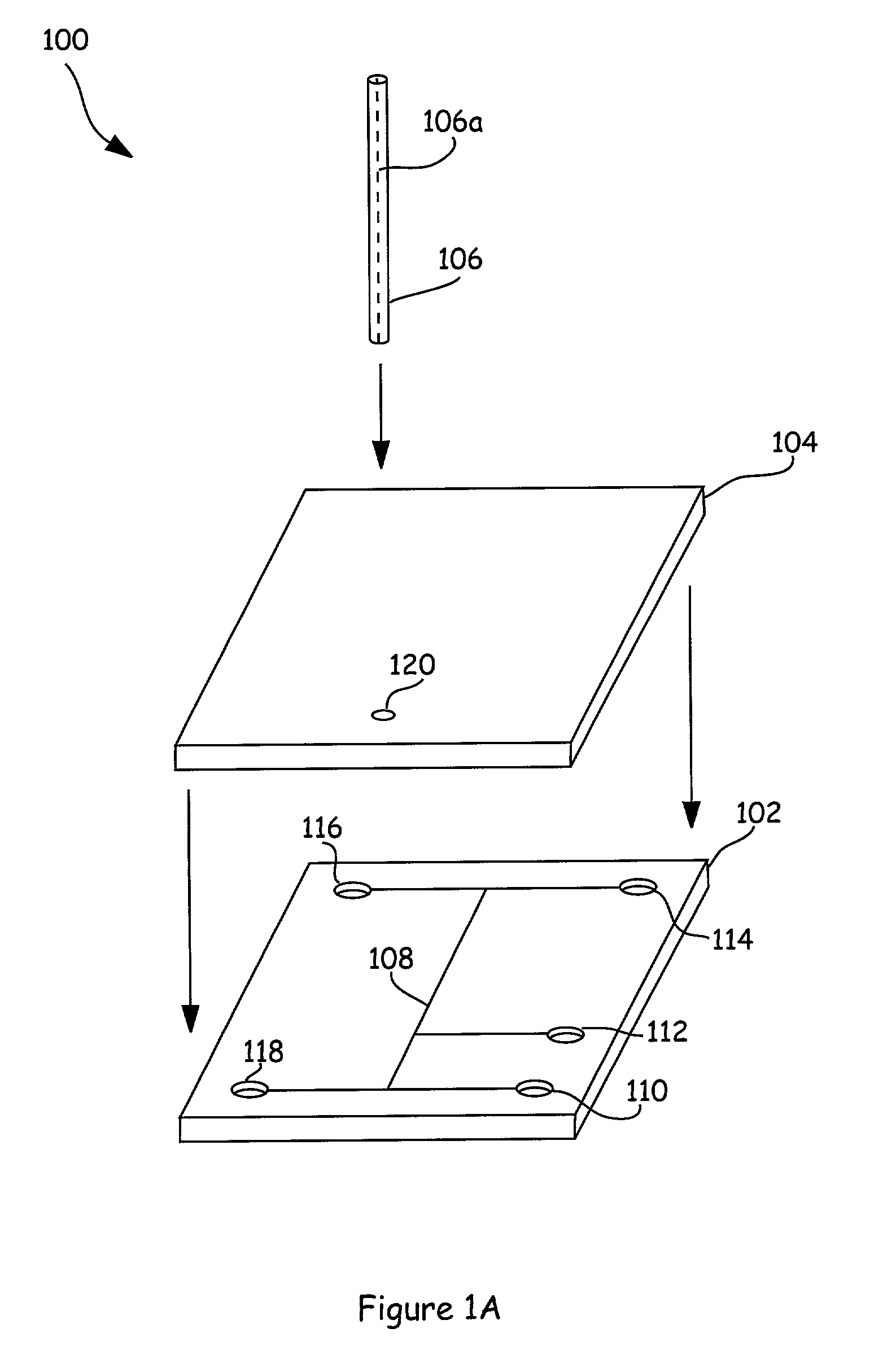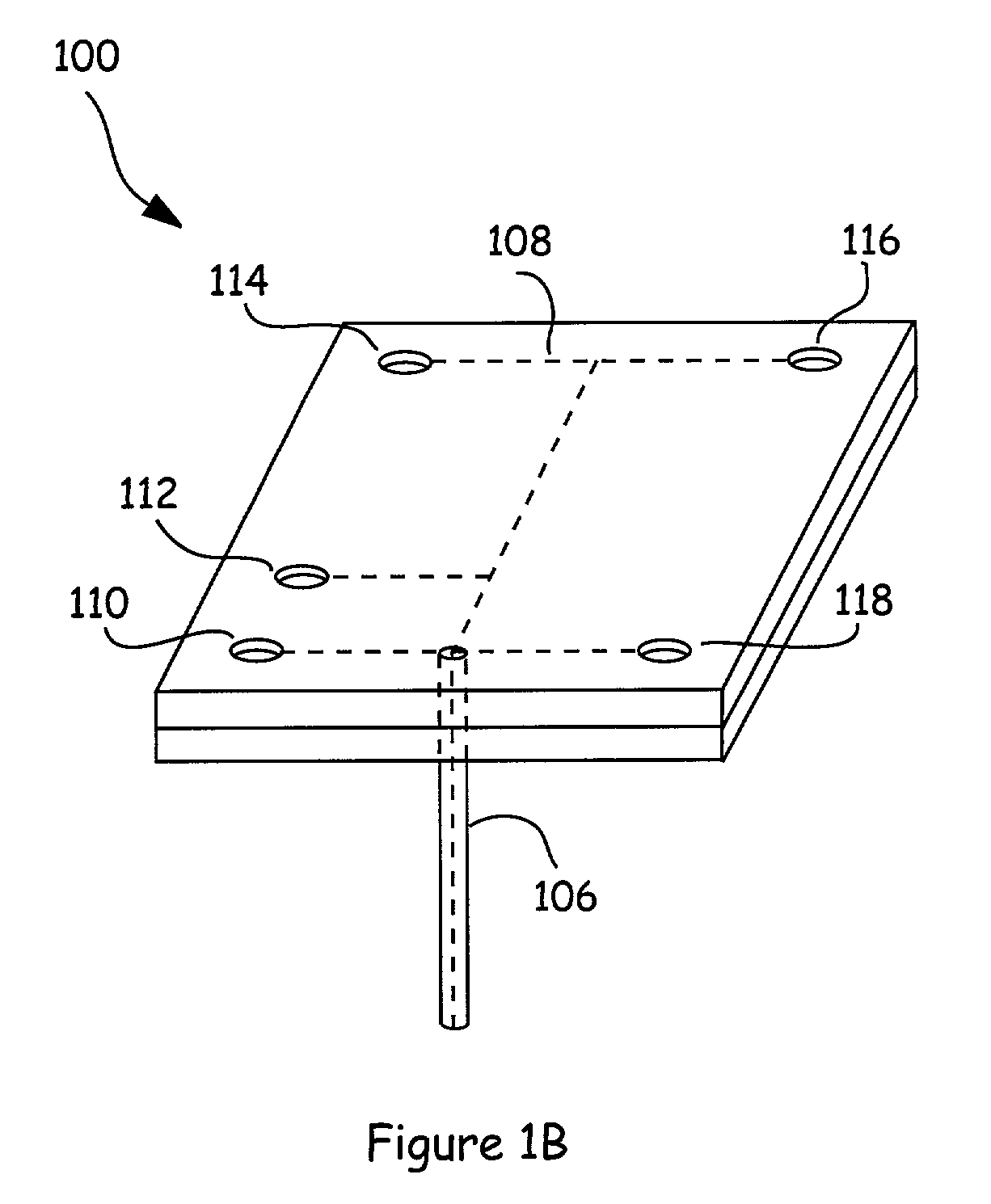High throughput separations based analysis systems
a technology of analysis system and high throughput, applied in the direction of diaphragm, fluid speed measurement, electrolysis, etc., can solve the problems of slow system throughput and labor intensive operation, conventional slab gel electrophoresis is a very time-consuming and labor-intensive process, and can take up to several hours to complete the process, so as to achieve high flow resistance and high flow resistance. , the effect of high flow resistan
- Summary
- Abstract
- Description
- Claims
- Application Information
AI Technical Summary
Benefits of technology
Problems solved by technology
Method used
Image
Examples
example 1
Chip Design and Fabrication
[0078]A microfluidic device having a channel and reservoir configuration illustrated in FIG. 2 was fabricated from a pair of planar glass substrates. In particular, a first substrate was etched to provide the various channels of the device. Channels 206 and 210 were etched to a depth of approximately 20 μm, with channel 206 having a width (at the top of the channel) of approximately 90 μm while channel 210 had a width of approximately 165 μm. Channel 204, 208 and 216 were etched to a depth of approximately 7 μm and widths of approximately 24 μm. The overall length of the separation channel 204 was 56 mm, while the injection channel 208 was 15.6 mm in overall length which included a 0.5 mm segment connecting the separation channel to the sample loading channel 206. The sample loading channel 206 had an overall length of 39.6 mm, while the reagent introduction channel 210 had a length of 13.2 mm and the electrical connecting channel 216 was 8.9 mm long. Rese...
example 2
Serial Separations-Based Analysis
[0079]The device shown in FIG. 2 was used to perform a number of serial DNA separations by bulk loading sample material into the sample loading channel, injecting a small fraction of that material into the separation channel that included a separation medium, and electrophoretically separating the material.
[0080]All reagents were taken from a DNA 7500 LabChip® kit, commercially available from Agilent Technologies. The separation medium included a mixture of a sieving polymer solution and DNA intercalating dye. Internal DNA marker standards (DNA Markers) contained a 15 bp and 2000 bp DNA fragments, each at a concentration of 5 ng / μl. The DNA ladder, used to generate a standard curve against which sample data was measured, included fragments of 50 bp, 100 bp, 500 bp, 700 bp and 1000 bp, where each fragment was present at a concentration of 4 ng / μl.
[0081]The microfluidic device was prepared by adding 25 μl of the separation medium to reservoirs 220, 224...
example 3
Post Separation Dilution for Protein Separations
[0083]The device shown in FIG. 3C was used to perform a protein separation where a post separation dilution operation is performed prior to detection. The device was loaded with a separation matrix that was made up of 3.25% polydimethylacrylamide co-acrylic acid with 0.25% SDS and syto 60 dye 1t 4 μM, in 0.12 mM tricine buffer. The separation matrix was loaded into reservoirs 370, and 374–382 and these wells were pressurized using a syringe for 4 minutes each to drive the matrix through the channels of the device. The matrix mixture in wells 380 and 382 was removed and replaced with matrix that lacked SDS and dye.
[0084]The sample for separation was a Bio-Rad standard protein ladder (#148–2015) that had been diluted 3× in PBS. Fifty μl of the diluted ladder was mixed with 25 μl of sample buffer (4% SDS, 10 mM tricine, 3.5 mM Tris) and heated to 100 ° C. for 5 minutes. After heating, the samples were diluted with 150 Ml of water and the ...
PUM
| Property | Measurement | Unit |
|---|---|---|
| Fraction | aaaaa | aaaaa |
| Fraction | aaaaa | aaaaa |
| Fraction | aaaaa | aaaaa |
Abstract
Description
Claims
Application Information
 Login to View More
Login to View More - R&D
- Intellectual Property
- Life Sciences
- Materials
- Tech Scout
- Unparalleled Data Quality
- Higher Quality Content
- 60% Fewer Hallucinations
Browse by: Latest US Patents, China's latest patents, Technical Efficacy Thesaurus, Application Domain, Technology Topic, Popular Technical Reports.
© 2025 PatSnap. All rights reserved.Legal|Privacy policy|Modern Slavery Act Transparency Statement|Sitemap|About US| Contact US: help@patsnap.com



